Slow-Made In Meghalaya
From Meghalaya, inspired by a local folk tale that translates into the rapaciousness of man destroying nature, comes a collection that aims to revive a dying embroidery form and the heritage craft of eri silk hand weaving
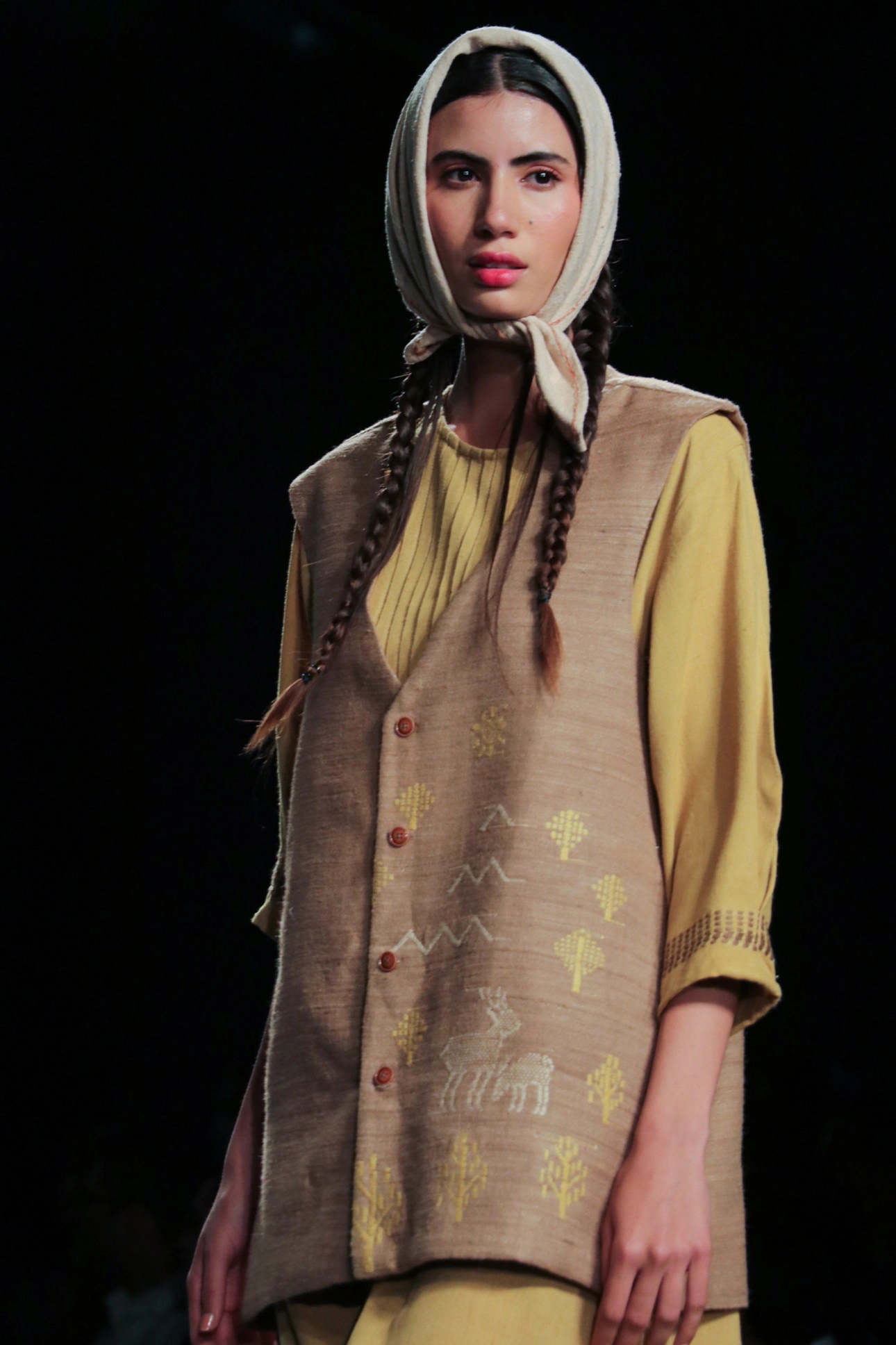
Verve chats with Ibalarihun Mallai of the label Kiniho that showcased a muted collection blending traditional embroidery and fabric with contemporary cuts and silhouettes at the FDCI x Lakmé Fashion Week….
Excerpts from the conversation….
The inspiration behind this showcase is a Khasi folk tale Sier Lapalang. Tell us about that.
On the plains of Bangla, by the foothills of Ri Khasi, lived U Sier Lapalang, a stag and the only son of a doting mother. One spring day, despite the warning and protests of his mother, he ventured into the beckoning highlands, enticed by her tales of their beauty and the variety of delicacies that grow there, especially the abundance of jangew, his favourite food.
The old mother became quite ill with worry as her son failed to return and left her home to look for him. One day, as she was walking listlessly about, she heard a great noise. She stopped dead in her tracks and saw a procession of people laughing, cheering and chanting loudly and dancing around the body of her slain son. The mother then lost all her fear of man and his arrows and rushed headlong to the scene, lamenting in such a plaintive and mournful voice and in a language so steeped in sorrow and pain that every one of the merrymakers was struck by the tragedy of it all. As U Sier Lapalang’s mother sang her sad funeral song and wailed in agony, her heart burst and she followed her son into the other world.
This story is about a mother’s unconditional love, about a brave soul that sought to explore beyond its comfort zone, and also about man versus nature.
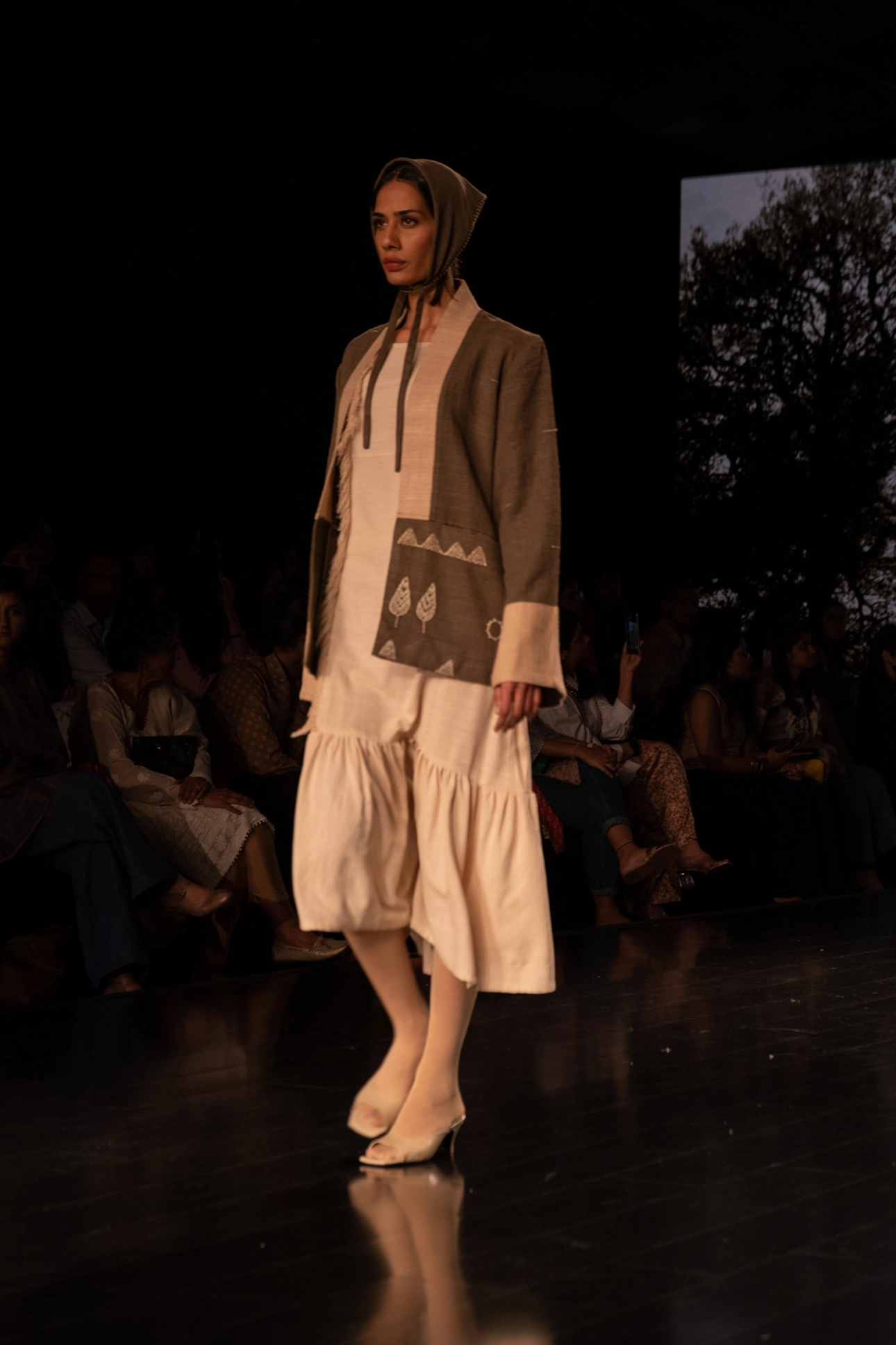
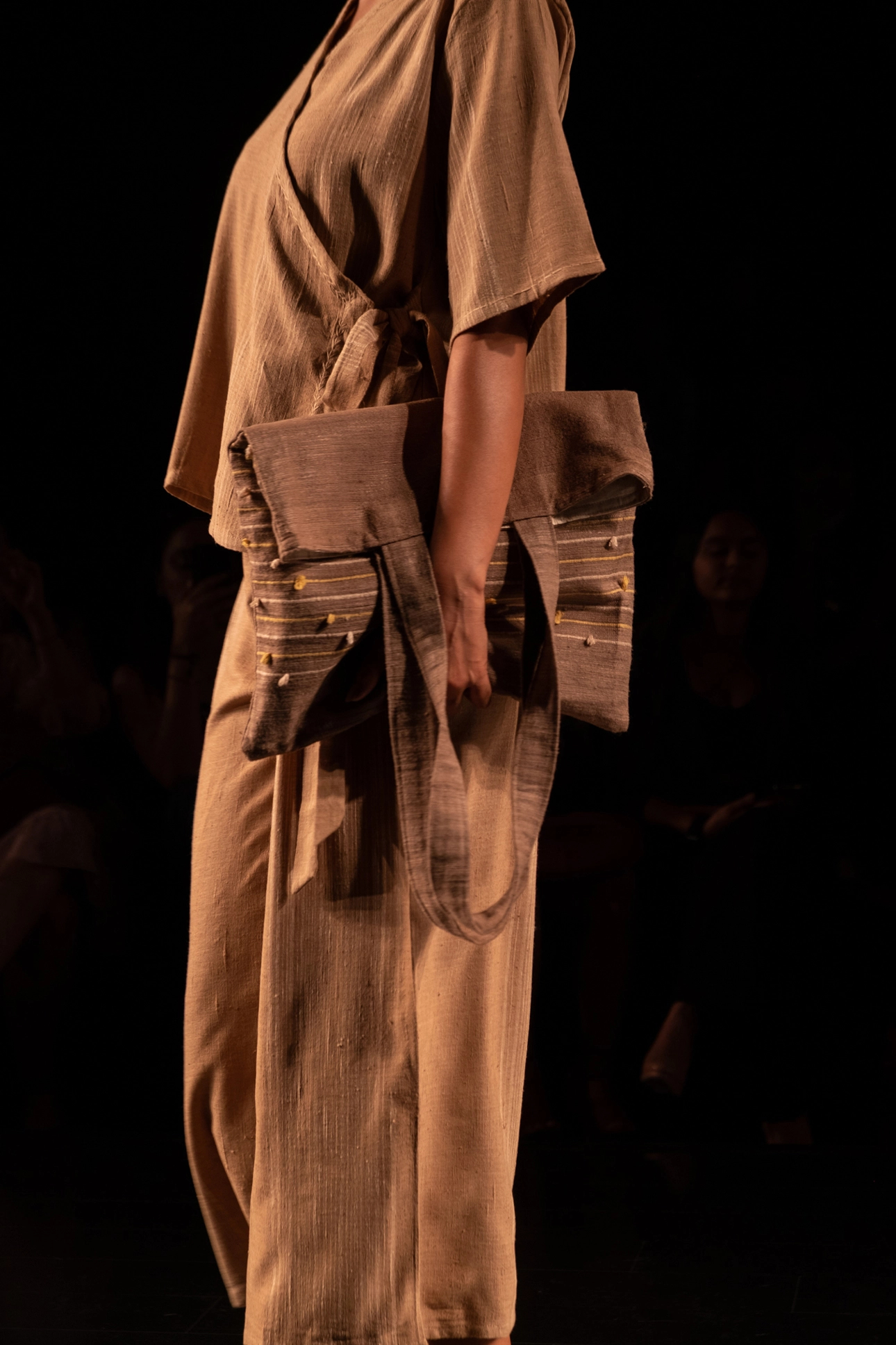
How has this folk tale inspired the collection?
This folk tale has a message for us all. The mother deer refers to Mother Nature, and the stag refers to the realm of living plants and animals and inanimate objects that are a part of Mother Nature. The villagers represent all human beings. The killing of the stag can be related to how human beings see themselves as separate from and superior to nature and non-human animals, who are considered mere beasts and resources to be mastered, leading to the reckless exploitation of nature. The crying of the mother deer is the agonising lamentation of Mother Nature.
Inspired by this folk tale, we bring forth our upcoming collection Sier Lapalang which has been created using handwoven eri silk fabric that was naturally dyed and handwoven by our local weavers in Ribhoi district, Meghalaya. Eri silk weaving is Meghalaya’s heritage craft. We rear our own silk, spin our own yarn and weave our own fabric
Furthermore, it is a journey that brings us to where we are as a brand; we try to connect beyond our comfort zone, beyond boundary lines — by introducing not very well-known skills and the heritage craft of Meghalaya to the world.
What is the history of Khneng, the oldest form of embroidery in Meghalaya and why have you used it in this collection?
Khneng is the only known form of embroidery and an almost dying art form unique to the Mustoh and Shella regions of Meghalaya. It can be traced back 200 years. The word khneng means “border” in the local Khasi language. It is used to decorate the border of a tapmoh (an eri silk shawl) and jainpien (Khasi wrap-around) with intricate designs. The embroidery is inspired by the centipede, ktiar in Khasi. The process is time-consuming, as a single line of thick and thin yarn is hand-stitched horizontally. The technique involved in the craft is a simple running stitch with black woollen thread. As time progressed, and in keeping up with the market, the artisans introduced a variety of synthetic coloured yarns like embroidery threads. Due to the intricate designs and time-heavy process, the demand has gradually decreased, and there hasn’t been much of a market for the craft.
As a brand that has chosen to focus on preserving our heritage craft with the unique beauty of this embroidery form, we felt responsible to introduce this art form in our work, starting with the Sier Lapalang collection. We encouraged artisans to use this technique to not only decorate the border of a fabric but also create motifs like hills, trees, arrows, the stag….
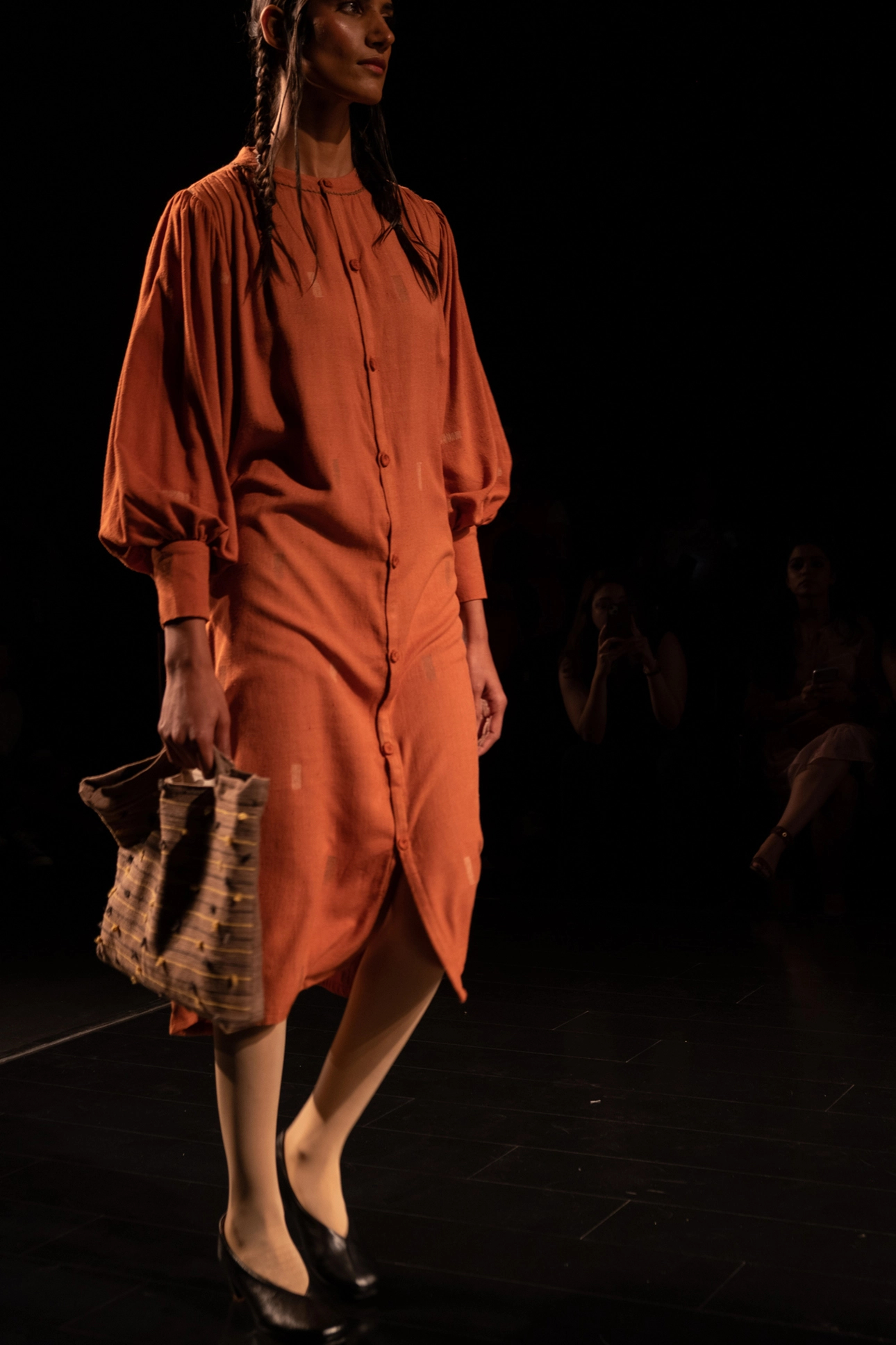
What does slow fashion mean to you? How economical and practical is it in our fast-paced world where time is money and considered a luxury?
To me, slow fashion or slow making means producing slowly in small quantities as per the capabilities that are in harmony with everyone involved. Slow and mindful ways lead to well-balanced ethical production and decreased waste. Kiniho believes in slow making, and we work exclusively with our own community weavers to sustain their livelihoods and uplift our heritage craft of eri silk handweaving. These weavers have other roles in their lives that they have to tend to apart from weaving. Some are mothers who are needed by their families while some are group leaders required by the community, and some of them are farmers who leave their hand-weaving jobs for their paddy fields during cultivation time.
This has been the culture in the community, and we cannot disrupt this cycle and exploit their lives in order to produce more. It is difficult to run a slow business where everyone wants a change immediately and where everyone wants options. But slow doesn’t mean no market, no money. It simply means slow making for slow consuming.
How involved are you in the lives and families of the weavers and their welfare?
When working with artisans, it’s our responsibility to support not only their livelihoods and incomes but also their overall physical and mental wellbeing by ensuring that their working conditions are fair and safe. We ensure that constant moral support and encouragement is given to our weavers in the form of monetary benefits and appraisals.
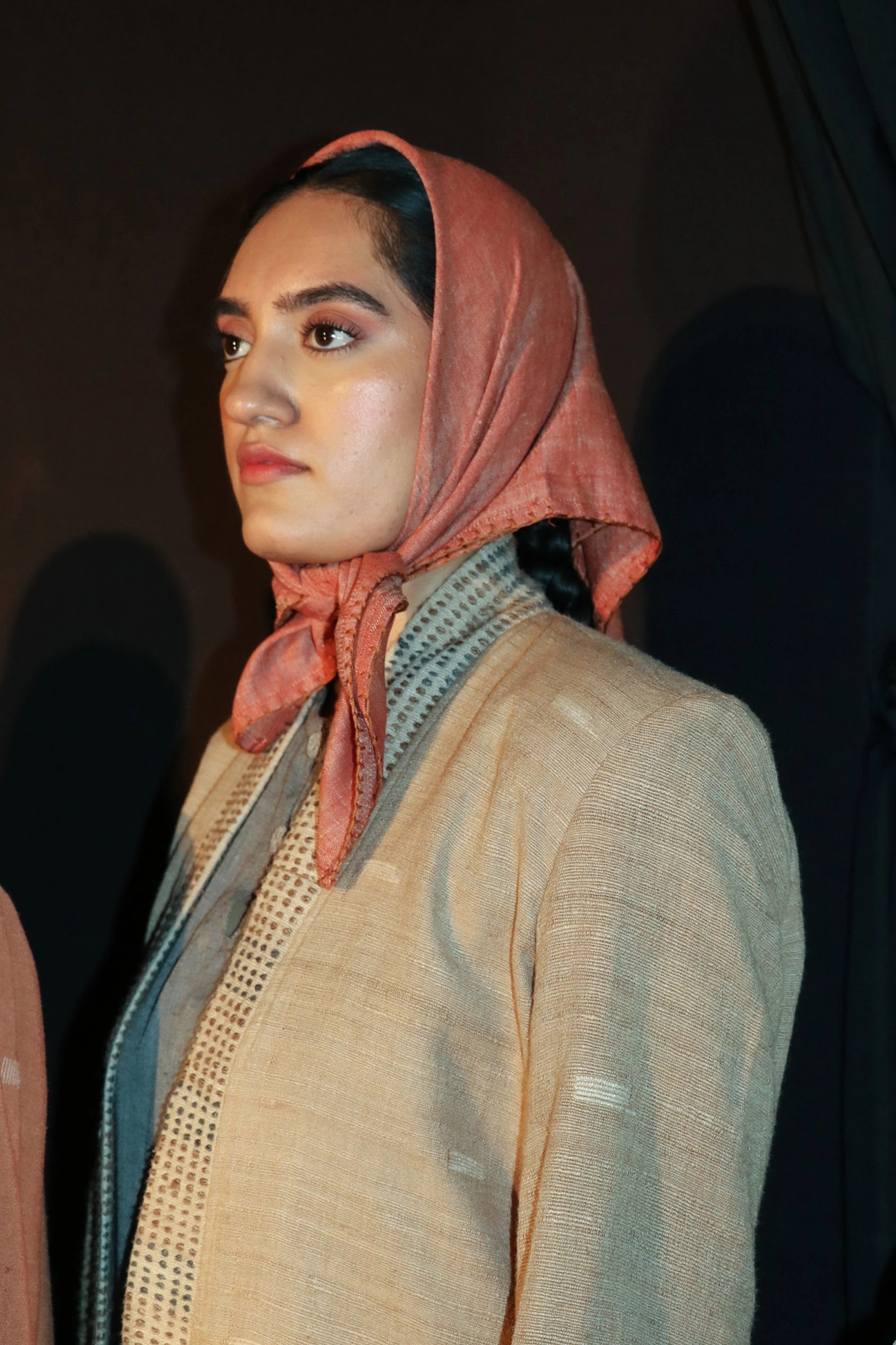
Why do you favour using eri silk and where do you get the silk from? Can you briefly describe the process of hand weaving the eri silk yarn for your garments?
The purpose of reconnecting with my roots led me to discovering eri silk. I was far away from home when I was looking for a material that supported my responsible business mission. It was my mother’s persistent phone calls persuading me to come back home that made me realise what I was looking for was just there waiting for me. Unlike other silks that are shinier and smoother, eri silk has lots of irregularities with lots of slubs and imperfections. Yet, it has a compulsive textural and soft, sheen look. This unique quality always reminds me that there’s beauty in imperfections.
We source our yarn locally. Umden is a village in Meghalaya which is also a craft cluster. In Umden, they rear their own silk, spin their own yarn, dye and weave their own fabric. Our production unit is based there as well, and we work with a group of community weavers. Daily activities in our production unit include dyeing our own yarns using only natural ingredients, designing and making our own fabrics for our collections. We also extract our own fibre and spin our own yarn for the unique texture required in our fabrics. We are proud to say that our Sier Lapalang collection was made from fibre to finished product in our production unit in Umden.
You use natural dyes — where do these come from?
To promote eco-friendly products, we work only with natural dyes. Using traditional methods and dyeing techniques, we utilise ingredients such as lac, turmeric and iron, which are available within the state.
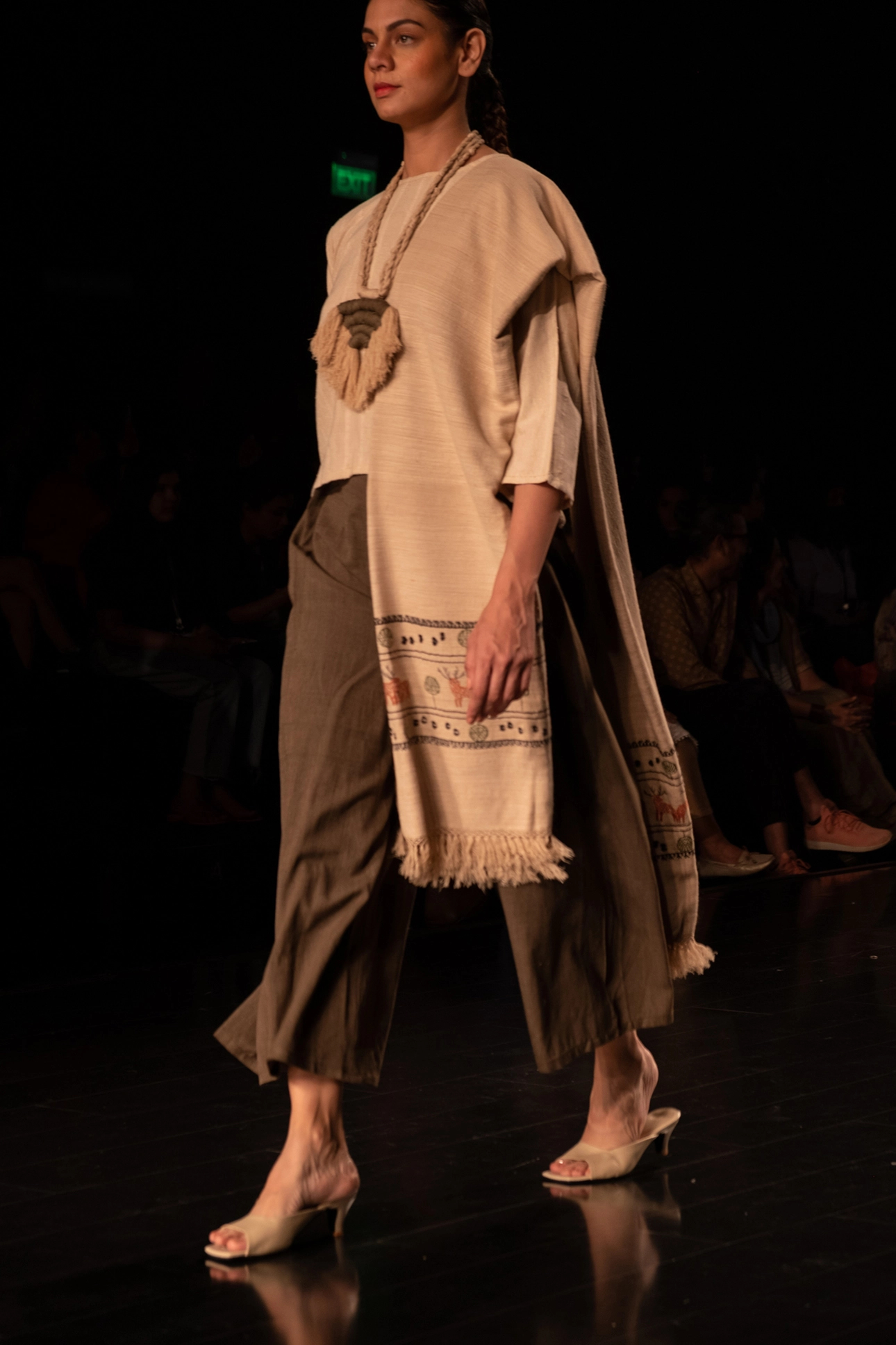
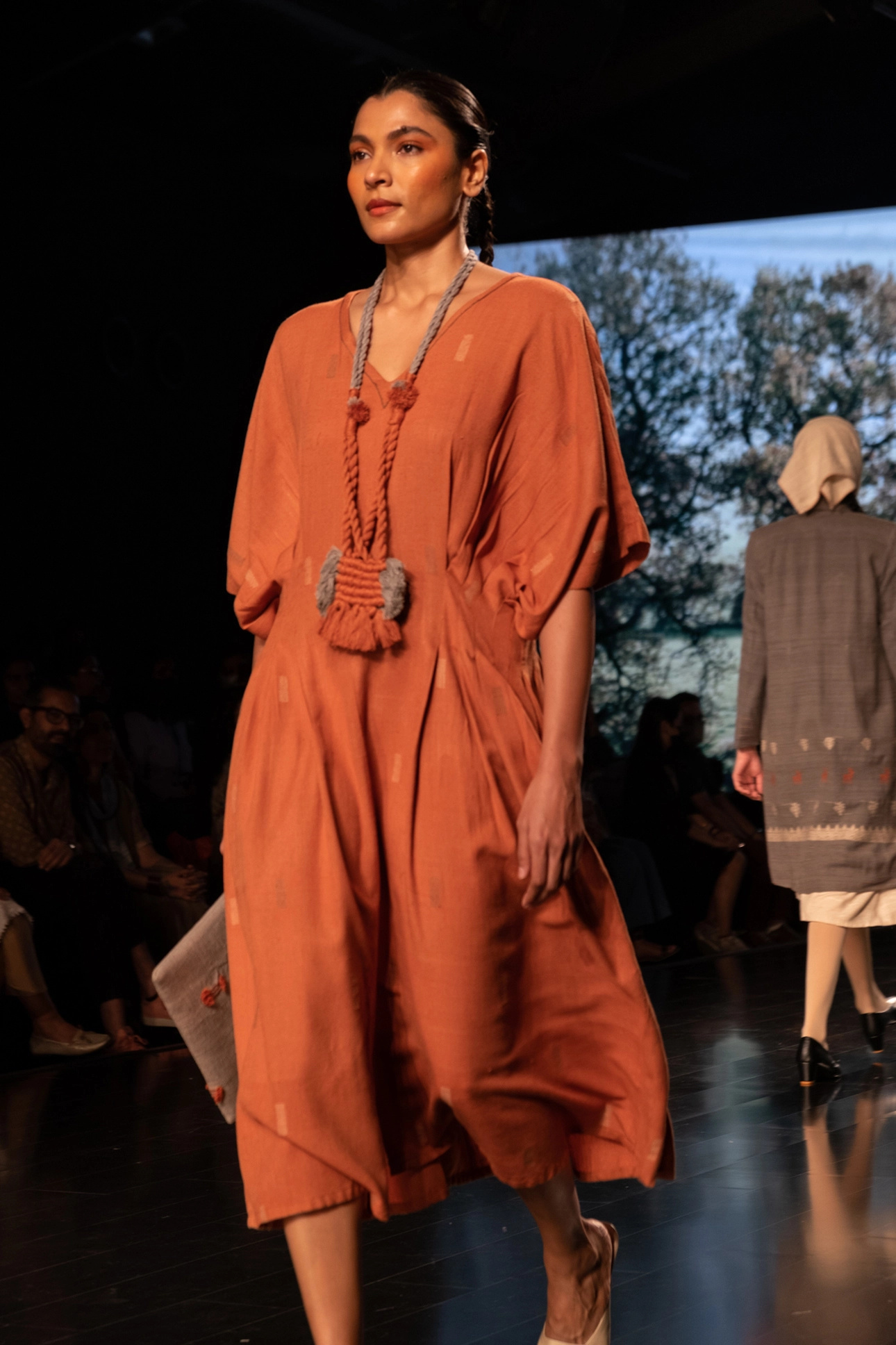
How long does a single shawl take to be made from start to finish?
It takes almost two weeks for an artisan to make one shawl, which includes extracting the yarn, spinning, dyeing and weaving.
Are the handwoven details on your garments created by a traditional process?
The handwoven details on our garments are inspired by locally known techniques.
Tell us about the un-waste necklace collection.
We believe in zero-waste production by ensuring that we make use of all possible waste or scraps from our production unit, which is where our un-waste necklaces are made. They are made from leftover yarns and fabrics procured from this unit.